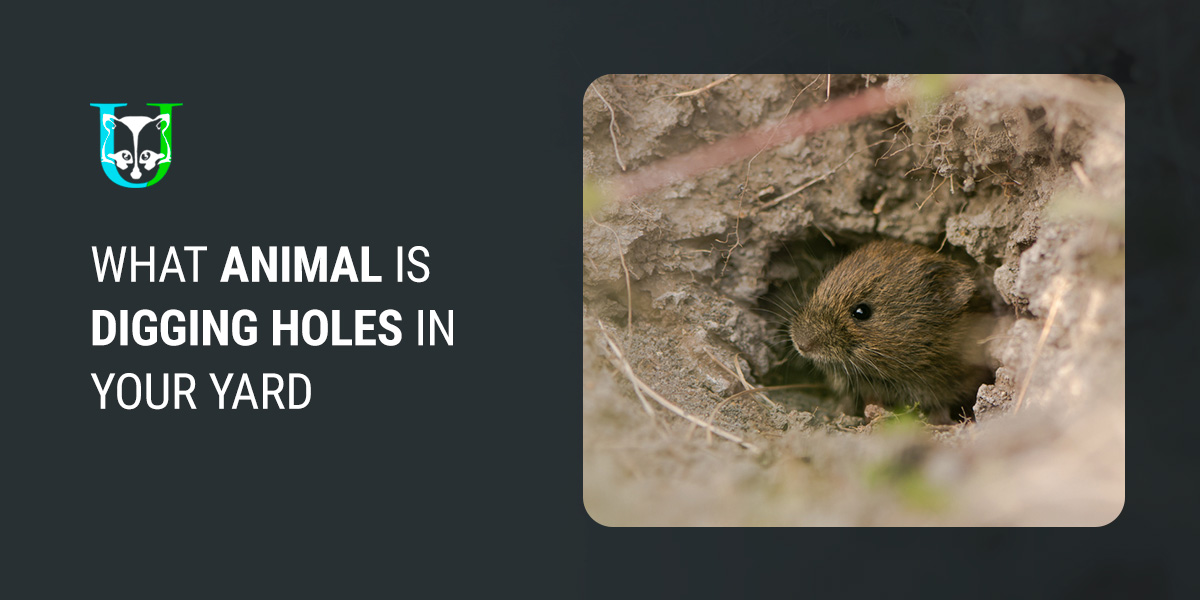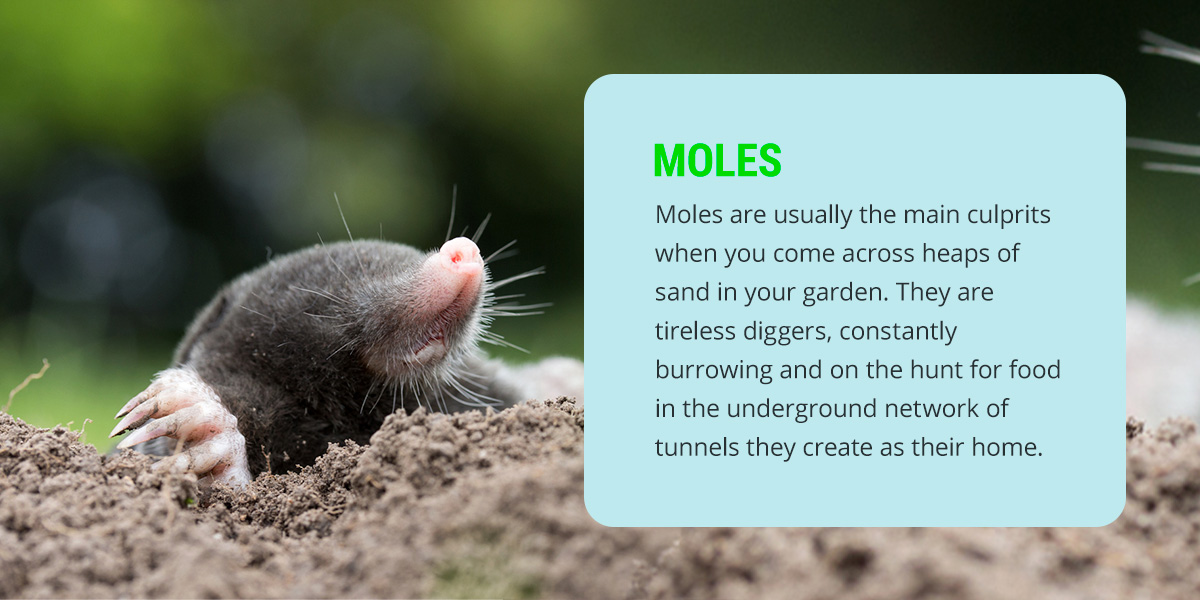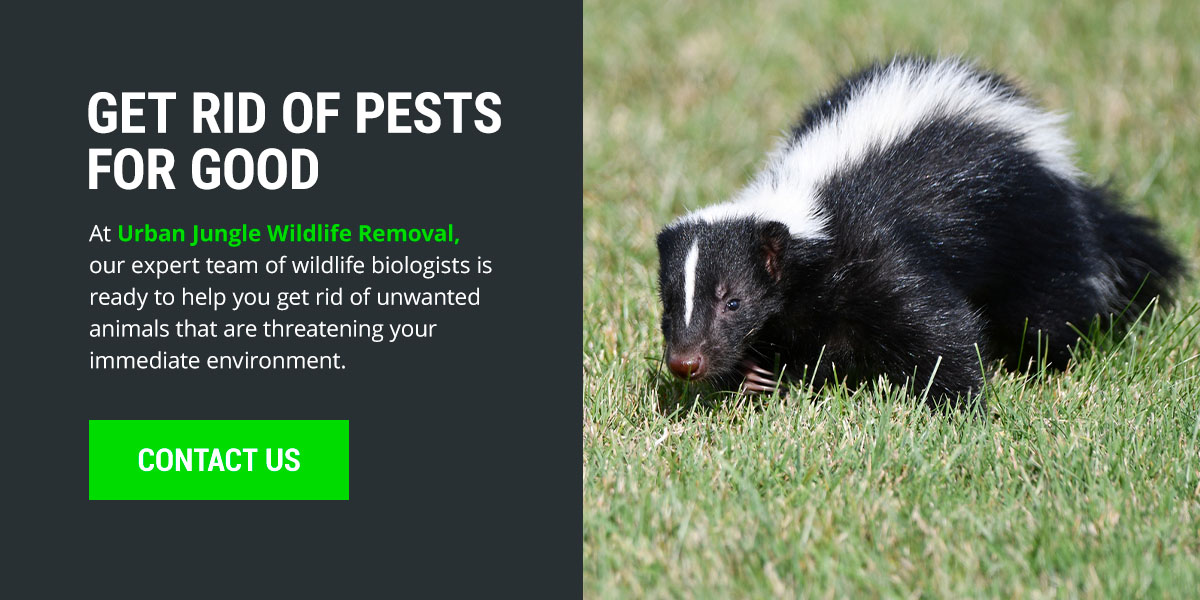
As a homeowner, the last thing you want is to wake up to mounds of sand and dirt plotted all over your yard. Small animals burrow in the ground, scurrying in tunnels and often ending up in your back or front yard. These pests can be hard to get rid of and may cause damage to your property and plants if you don’t do something.
We will explore a few animals known for being offenders in Texas, their physical characteristics, diet, activity and how to stop them.
1. Armadillos
Although 21 different species of Armadillo have been identified, only one is found in the United States. The nine-banded armadillo calls Texas home and is at the top of our list of possible culprits who could be digging holes in your yard at night. Their characteristics include:
- Physical attributes: These pre-historic, strange-looking critters are identified by their elongated armored bodies and diamond-shaped heads. They are quite fast for small mammals with seemingly heavy bodies and short, stubby legs.
- Diet: As omnivores, armadillos enjoy a mixture of insects and plants. They predominantly eat insects and larvae and use their sticky tongue to catch them after burrowing.
- Activity: They are shy and anti-social animals who sleep most of the time and rummage for food early in the morning and late at night to avoid being seen by humans. Armadillos can cause extensive damage to lawns and landscaping as the root around looking for food. Their holes are often cone shaped as they shove their faces in the ground rooting for grubs.
How to Stop Armadillos
You could place a fence around your garden once you’ve spotted them or try an environmentally-friendly repellent to keep them away. Or you could elicit the help of professional wildlife removal company to do it for you.
2. Skunks
Although skunks are infamous for their black-and-white coloring and emitting a potent smell that will make you head for the hills, there is more to them than meets the eye — or nose. Consider these characteristics of skunks:
- Physical attributes: Skunks have a small head and little legs holding a medium-sized body. They are black with solid white or spotted stripes running from the head to the back with a bushy tail. Their tail extends out straight from their body unless they are alarmed — a skunk with an upright tail might feel threatened and be ready to spray.
- Diet: Skunks are omnivores since they eat meat and plants. In urban areas, they are often found in dumpsters scavenging for food. Their primary source of sustenance includes insects, grubs, worms, vegetables, fruit and eggs. They may also help themselves to your pet’s food if you leave it outside.
- Activity: Largely nocturnal, skunks scavage at night and may wander around properties looking for food. You might find them digging holes in your yard at night or wandering into your trash bins. They might make themselves comfortable and build a home if an area is rich in food sources by burrowing or digging a hole. Sometimes they are found in barns and under porches, too.
How to Stop Skunks
Skunks can cause structural damage by biting through open wires. It is best to cover any wiring and avoid leaving any treats outside at night that could tempt them. If you see a skunk in your yard, it’s best to avoid it at all costs. Though they are generally fearful of humans, they could spray a foul-smelling liquid at you that is hard to remove and could cause a reaction. You could install a flood light to repel them at night, but if they persist, call a professional wildlife removal company to help remove them permanently and safely. If they are living under a deck, sealing or excluding the deck after removal is a good way to prevent future problem.
3. Moles
Moles are usually the main culprits when you come across heaps of sand in your garden. They are tireless diggers, constantly burrowing and on the hunt for food in the underground network of tunnels they create as their home. The following are a few ways you can identify moles:
- Physical attributes: Based on appearances, some might call moles cute, with their round bodies, soft brown or black fur and concealed eyes. However, they also have talon-like claws that are built for burrowing. Contrary to popular belief, moles are actually not blind. They are sensitive to light and don’t have outward ears, so they rely on their other senses of smell and touch to get around.
- Diet: Their favorite meals are supple earthworms and grubs, making them insectivores. Yummy. Moles are most attracted to nutrient-rich and moist soil, where they are more likely to find these food sources in abundance.
- Activity: You might have thought that moles are nocturnal, but they are actually crepuscular in nature. This means that they are most active late at night and early morning when there is little activity to disturb them outside. It does not mean they are not active during the day, though. When you see a mole surface, it could be because the soil is dry or they need to gather material to build a nest for their young.

How to Stop Moles
Moles are a nuisance because they usually leave numerous heaps of sand and dirt in your yard, disturbing your landscaping. While they don’t eat your bulbs and plants, they can tunnel through tree roots and uproot flowers. A thorough wildlife removal company can help you eliminate small animals that dig holes in the ground around your property. Professional wildlife companies can often prevent future activity through a combination of reducing potential food and applyong deterrents.
4. Gophers
Gophers belong to the rodent family. They are also called pocket gophers, mainly because their cheeks expand like pockets when they hold and move food through tunnels. You might confuse the mounds created by a gopher with that of a mole, but gopher mounds have entrance holes beside them, whereas moles push up mounds that are closed and cone-shaped. You can identify gophers by the following features:
- Physical attributes: They look like a mix between a rodent, chipmunk and a squirrel with their round bodies, short fur, large incisors, beady eyes and stumpy tail.
- Diet: Roots and plants are all they are after in your garden. If you are growing vegetation, you are at high risk of these intruders helping themselves to the fruits of your labor.
- Activity: Gophers are solitary mammals and are rarely found with other gophers. They are active underground all year, at all times of the day.
How to Stop Gophers
You could try the same preventative measures as you would for moles, but it might only be a temporary solution. It is better to get a wildlife removal company involved to address the root of the issue and remove them completely.
5. Voles
Though their names sound similar, voles and moles are nothing alike. The vole is a type of rodent that is often confused with the common field mouse. The other distinctive difference between the two is that the mole eats worms and insects, while the vole only eats plants and shrubs. Other characteristics of voles include:
- Physical attributes: Voles look like small mice with rounder heads, ears and bodies. They come in different colors and are usually small and light.
- Diet: Voles eat plants and shrubs, with a voracious appetite for roots and stems. They can uproot entire plants, and you will notice the characteristic markings on trunks and stems from their large front teeth.
- Activity: Vole tunnels are about two inches wide and found along or near the surface so they can access their food supply of plants and leaves easily. Voles are one of the few species that are active all year long. They do not hibernate like some other rodents, they merely become less active in winter. They will dig holes deeper in the ground in the winter when there is snow to store food.
How to Stop Voles
You could try different methods to remove voles, like trapping, fencing or an offensive spray mixture, but it might not keep them away for good. Why not call a reputable wildlife removal company to help you put a stop to them, once and for all?
Other Animals That Might Be Digging Holes in Your Yard
These are not the only animals you might come across digging holes in your yard or garden. Others include feral hogs, raccoons, squirrels and opossums. Depending on where you live in Texas, some pests are more prevalent than others.
Get Rid of Pests for Good
Pests can damage your property and may even present dangers to you and your pets. While there are temporary deterrents for pests that dig holes in your yard, it’s important to address the problem at the source.
At Urban Jungle Wildlife Removal, our expert team of wildlife biologists is ready to help you get rid of unwanted animals that are threatening your immediate environment. We tailor our approach to your unique situation and want to ensure you are comfortable with the process. To get rid of pests in your yard, we are just a call or click away!

